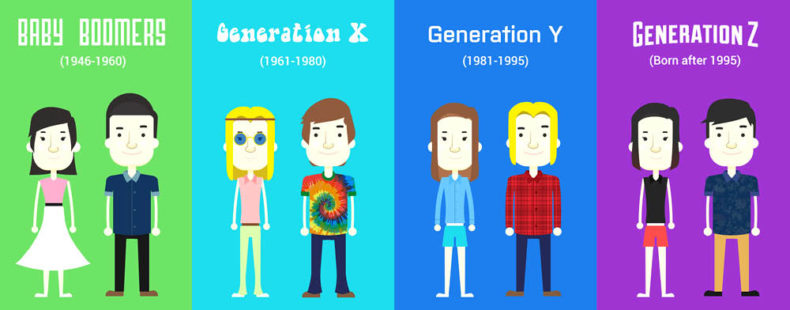Baby Boomers
They are quite possibly the most talked about of the generations—the Baby Boomers. Born between the mid-1940’s and the early-1960’s, the Boomers are the children of the G.I. Generation, and up to that point, they were the largest demographic generation in history. And, there’s a lot to say about them … so here we go.
They grew up in the shadow of the Cold War and the Vietnam War, and many are old enough to remember the assassination of JFK. These terrible events led the Boomers to take their now-famous stance of rebelling against the values of their parents. In doing so, they brought us rock and roll, free love, Woodstock, hippie culture, women’s and civil rights, environmental issues, and civic engagement on a massive scale.
The Baby Boomers are sometimes referred to as the Me Generation … they fervently believe they are different from other generations. This assertion is characterized by both a distrust of older generations (“Never trust anyone over 30.”) as well as an inability to allow younger generations to move to the forefront of civic leadership (See: 2016 election candidates Donald Trump and Hilary Clinton).
As a generation, the Boomers are enormously successful (See: Apple, Microsoft). They attribute that success to their fundamental uniqueness as a generation. Sometimes though, they fail to attribute any of their achievements to the prosperous post-war years that allowed them to access cheap college education and a generally positive job market.
Within the Baby Boomer Generation, there is also a sub-generation. This group is known as Generation Jones. Members of Generation Jones represent the second wave of Boomer children, born between the late-1950s and mid-1960s. This group is noteworthy due to their complaints that their older siblings got to reap the true benefits of the Baby Boomer Generation while they were left to pick up the scraps.






















